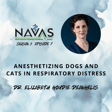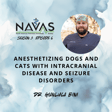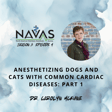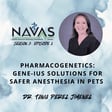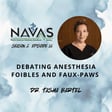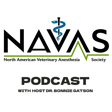
Anesthetizing Dogs and Cats with Common Cardiac Diseases - Part 2
Welcome back, gas passers! It’s time to pick up right where we left off—because your heart (and your patients’) can’t afford to miss part two of our special cardiac anesthesia series on the North American Veterinary Anesthesia Society Podcast!
Host Dr. Bonnie Gatson returns with the fabulous Dr. Carolyn McKune of Mythos Veterinary LLC to continue our journey into the nuanced world of anesthetizing dogs and cats with cardiac disease. Now that we’ve covered the pathophysiology and prep in our first episode, it’s time to talk protocols: how do we tailor anesthetic plans for patients with mitral valve disease and hypertrophic cardiomyopathy? What intraoperative monitoring really matters? And how do we handle those dreaded hypotensive or arrhythmogenic moments? This episode is guaranteed to provide some heartfelt guidance on tackling anesthetic management for these commonly seen, but nevertheless challenging patients.
If you like what you hear, we have a couple of favors to ask of you:
Become a member of NAVAS for access to more anesthesia and analgesia educational and RACE-approved CE content.
Register for the Live Online Fireside Chat #16 - Non-Invasive Blood Pressure: To Trust or Not To Trust. FREE for NAVAS members happening on Wednesday, June 18th at 7pm EST.
The North American Veterinary Anesthesia Society (NAVAS) helps veterinary professionals and caregivers advance and improve the safe administration of anesthesia and analgesia to all animals, through development of standards consistent with recent findings documented in high quality basic and clinical scientific publications and texts.
Spread the word. Share our podcast on your socials or a discussion forum. That would really help us achieve our mission: Reduce mortality and morbidity in veterinary patients undergoing sedation, anesthesia, and analgesia through high-quality, peer-reviewed education.
Thank you to our sponsor, Dechra - learn more about the pharmaceutical products Dechra has to offer veterinary professionals, such as Zenalpha.
If you have questions about this episode or want to suggest topics for future episodes, reach out to the producers at education@mynavas.org.
All opinions stated by the host and their guests are theirs alone and do not represent the thoughts or opinions of any corporation, university, or other business or governmental entity.
